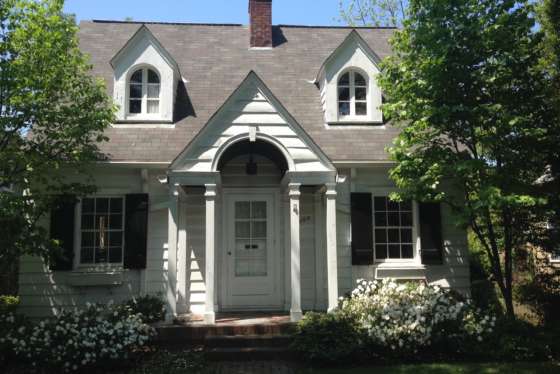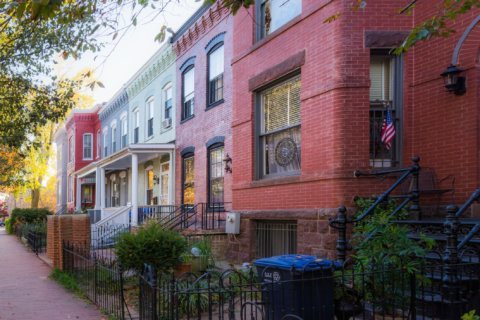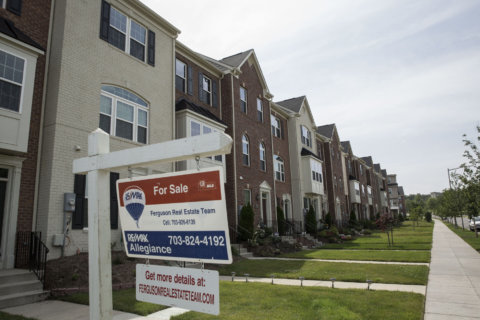In some industries, the start of summer signals long weekends and relaxed deadlines. But in the real estate world, business doesn’t slow down when the warm weather hits — that’s when things start to heat up.
April, May and June are the three most popular months to buy and sell a home, and that’s because buyers, even those without children, prefer to move and settle into a new space before the end of summer and the start of the school year, explained Corey Burr, senior vice president at TTR Sotheby’s International Realty.
“This is when buyers and sellers know that the chips are down and this is the time to make it happen,” Burr said.
“And even though there might be a little more competition for sellers (in a crowded spring market), they know that buyers are out there. And it’s much better to target right now, rather than October or November or December.”
If you have plans to list a property this season, or are thinking of doing so in the future, two real estate experts share some tips to make the selling process go a little smoother.
Tidy up
One of the most important things you can do to get your home ready to sell is also one of the least expensive — and that is to declutter.
“People want to see something that is just beautifully presented,” said Burr, who advises that sellers put away knickknacks and remove up to 30% of furniture and accessories in each room.
Caroline Carter, who runs the D.C.-based home transition service Done in a Day, said this phase of selling can be the most daunting, especially for owners who have lived in a home for a while. She recommends sellers set a schedule and make deadlines that lead up to the home’s listing. Then, start in the spaces that tend to accumulate the most “stuff,” such as the attic, the basement and the garage.
Separate your items into “sell,” “donate” and “keep” piles, and with the items you intend to keep, decide which ones should be stored until the move.
“It’s the best investment,” Burr said about renting a short-term storage unit while putting a house on the market.
“Just have it for a month, two months, three months, and just clear out your property, because buyers need to see themselves in your property and if it’s crammed with your personal possessions, they’re going to think it’s not that big of a property.”
Look at your home from the eyes of a buyer
Carter said another thing to do before listing is to give your home a “bricks-and-mortar assessment” using a “buyer mentality,” and isolate any issues that might make a buyer think twice before making an offer on your home.
“The process of selling your home is actually not about you, but about the potential buyer,” said Carter, author of “Smart Moves: How to Save Time and Money While Transitioning Your Home and Life.”
Start with the outside: Look at everything from the gutters to the shutters, and make a list of items that need to be repaired. Then, move to the interior of the home.
“Don’t assume that buyers will overlook issues that will cost them time and money to address, because they won’t, typically,” Carter said.
And remember to remove emotion from the equation. Instead, think of it as a business transaction, and you want to get the best deal possible.
Small repairs pay off big
Short on both time and money when it comes to home improvement? There are plenty of small fixes that can have a big impact. For starters, Burr said painting should be a priority.
“Right now, what’s hot is just a soft gray and white trim. This gets people to know that they can put their own stamp on the property without being thrown off course by weird colors,” Burr said.
Also, focus on the front, which is the buyer’s first impression of the whole property.
“Make the front door and the surrounding area just gleam, and have, in this time of year, some plantings to add color to the front,” Burr said.
And unless your carpet is in “pristine condition,” Carter said it’s worth replacing. “It’s some of the best money you will ever spend,” she said.
Old bathroom tiles can look like new with a white glaze; and if floors are scratched and scuffed, get them refinished. Otherwise, Carter said buyers will see your property as “less of a listing price and more of an asking price.”
Updating outdated light fixtures and pulls on kitchen cabinets can also make a big difference to buyers.
When it makes sense to spend big
If you have the budget to sink into bigger projects before selling, Burr said focus your efforts on the kitchen and the master bathroom.
“This is where people get the most excited to see that they don’t have to put future investment in, at least for the next five or 10 years,” he said.
And while new systems and structural improvements might have a lot of appeal to buyers, they aren’t always necessary to sell a home.
“As long as you don’t have a major aspect of your property that is totally aging, it’s best to not focus on a new roof or something like that. It will come up in the inspection, but if it’s 15 years old and has a life of 30 years, you don’t have to worry about it,” Burr said.
“Focus, instead, on the curb appeal and the landscaping and the painting.”
Give your home a reasonable price
Burr is not a fan of underpricing a home just to drum up interest. He said if buyer activity is slow in that first week, it could leave you in a less than ideal situation.
“You want to price it so that after a buyer goes through, the buyer stands at the curb, looks back at the house and says, ‘That’s my property, and I want to do everything I can do right now to make that mine,’” he said.
In the D.C. area, Burr said homes under $800,000 sell very quickly, especially in the “hotter neighborhoods.” As the price goes up, so does the time it takes to sell a property.








